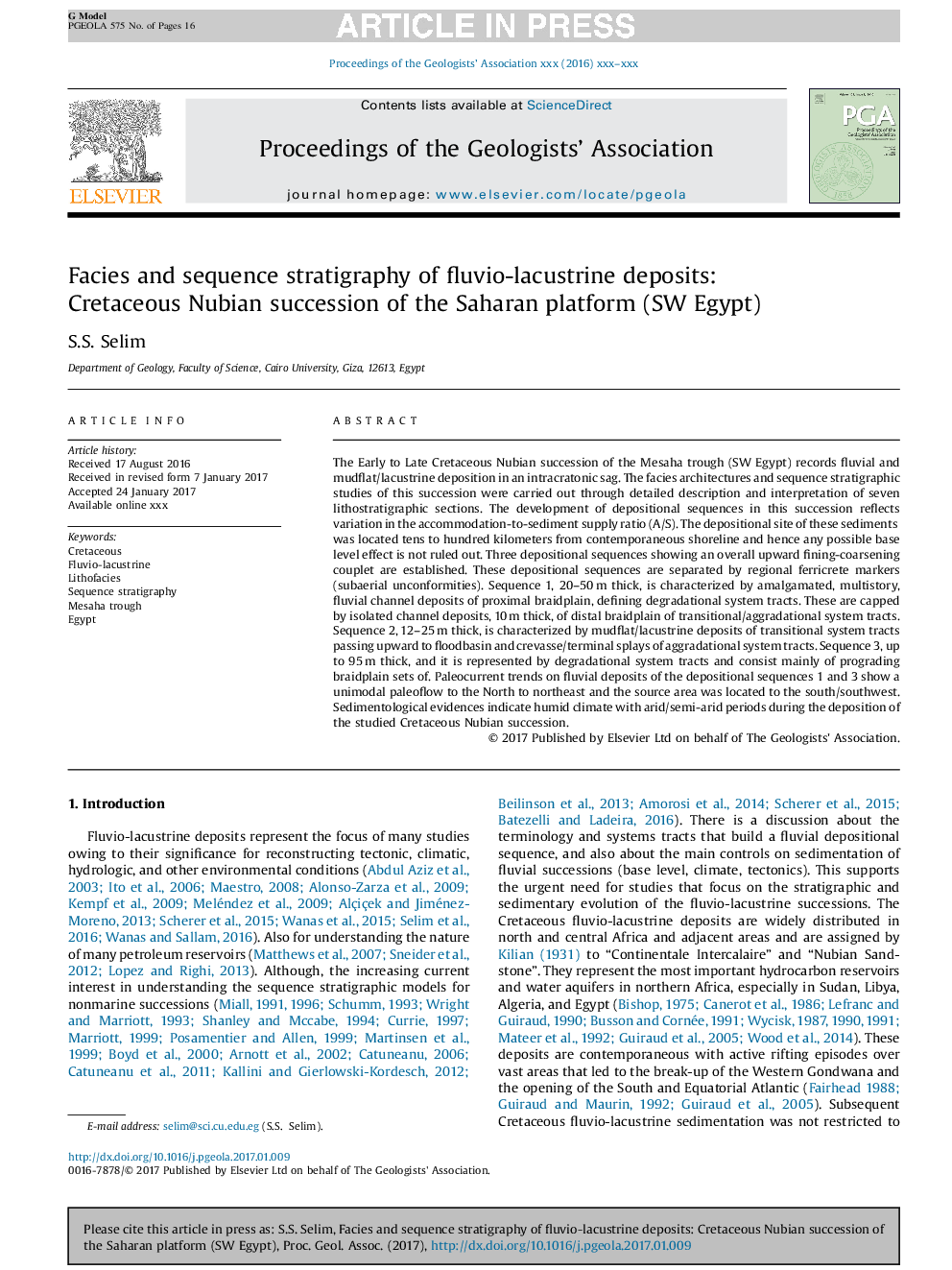| کد مقاله | کد نشریه | سال انتشار | مقاله انگلیسی | نسخه تمام متن |
|---|---|---|---|---|
| 5786479 | 1640638 | 2017 | 16 صفحه PDF | دانلود رایگان |
عنوان انگلیسی مقاله ISI
Facies and sequence stratigraphy of fluvio-lacustrine deposits: Cretaceous Nubian succession of the Saharan platform (SW Egypt)
دانلود مقاله + سفارش ترجمه
دانلود مقاله ISI انگلیسی
رایگان برای ایرانیان
کلمات کلیدی
موضوعات مرتبط
مهندسی و علوم پایه
علوم زمین و سیارات
زمین شناسی
پیش نمایش صفحه اول مقاله

چکیده انگلیسی
The Early to Late Cretaceous Nubian succession of the Mesaha trough (SW Egypt) records fluvial and mudflat/lacustrine deposition in an intracratonic sag. The facies architectures and sequence stratigraphic studies of this succession were carried out through detailed description and interpretation of seven lithostratigraphic sections. The development of depositional sequences in this succession reflects variation in the accommodation-to-sediment supply ratio (A/S). The depositional site of these sediments was located tens to hundred kilometers from contemporaneous shoreline and hence any possible base level effect is not ruled out. Three depositional sequences showing an overall upward fining-coarsening couplet are established. These depositional sequences are separated by regional ferricrete markers (subaerial unconformities). Sequence 1, 20-50Â m thick, is characterized by amalgamated, multistory, fluvial channel deposits of proximal braidplain, defining degradational system tracts. These are capped by isolated channel deposits, 10Â m thick, of distal braidplain of transitional/aggradational system tracts. Sequence 2, 12-25Â m thick, is characterized by mudflat/lacustrine deposits of transitional system tracts passing upward to floodbasin and crevasse/terminal splays of aggradational system tracts. Sequence 3, up to 95Â m thick, and it is represented by degradational system tracts and consist mainly of prograding braidplain sets of. Paleocurrent trends on fluvial deposits of the depositional sequences 1 and 3 show a unimodal paleoflow to the North to northeast and the source area was located to the south/southwest. Sedimentological evidences indicate humid climate with arid/semi-arid periods during the deposition of the studied Cretaceous Nubian succession.
ناشر
Database: Elsevier - ScienceDirect (ساینس دایرکت)
Journal: Proceedings of the Geologists' Association - Volume 128, Issue 2, April 2017, Pages 271-286
Journal: Proceedings of the Geologists' Association - Volume 128, Issue 2, April 2017, Pages 271-286
نویسندگان
S.S. Selim,